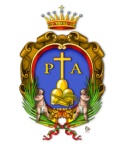Dystopian Literature: A Strategic Overview for Investors and Partners
Dystopian literature presents a unique intersection of creativity, societal critique, and engagement that has captured the attention of readers and investors alike. Successful dystopian novels often come with strong branding strategies that include author promotion, series continuity, and thematic consistency. This synergy between literature and visual media creates opportunities for cross-promotional activities and enhances the overall marketability of dystopian novels.
Platform or Mobile Reach
In today’s digital age, the reach of dystopian novels extends beyond traditional print formats.
The most recognized titles have established strong brands that transcend their original formats. Themes of surveillance, authoritarianism, and loss of individuality are increasingly relevant, creating a strong connection between the narratives and contemporary readers. Here are several aspects to consider: dystopia books
- Emotional Engagement: Dystopian novels often evoke strong emotional responses, which can lead to high levels of reader engagement. This cross-platform engagement significantly enhances user growth by tapping into diverse consumer preferences.
Product-Market Fit
Dystopian novels often reflect societal anxieties, making them inherently relevant and relatable.
The genre’s user growth, strong product-market fit, expanding platform reach, enhanced brand visibility, and effective long-term retention strategies position it as a lucrative investment avenue. Titles like “1984” by George Orwell and “The Handmaid’s Tale” by Margaret Atwood have not only remained relevant but have also experienced a resurgence in popularity due to contemporary parallels.
Moreover, the adaptability of these stories into other media formats—such as films, TV series, and graphic novels—enhances their market fit. These narratives resonate with contemporary societal concerns, allowing authors to tap into the collective psyche of their audience. E-books and audiobooks have democratized access to literature, allowing readers to enjoy their favorite series on mobile devices. This relevance ensures a steady demand for new titles, as readers seek narratives that reflect their anxieties and aspirations.
Moreover, successful series such as “The Hunger Games” and “Divergent” have set a precedent for franchises that extend beyond the written word.
Furthermore, this analysis aims to provide a comprehensive overview of the current landscape of dystopian literature, emphasizing user growth, product-market fit, platform reach, brand visibility, and long-term retention strategies. dystopian literature books great dystopian novels
User Growth and Market Demand
The user base for dystopian literature has expanded notably, particularly among younger demographics. This ongoing dialogue keeps the community active and invested.
Conclusion
The analysis of dystopian books, focusing on user growth, product-market fit, platform reach, brand visibility, and long-term retention strategies. E-books and audiobooks have gained significant traction, providing investors with a diverse range of platforms to explore. This alignment with current societal concerns positions the genre favorably in the market, as readers seek narratives that reflect their realities and provoke thought.
Furthermore, the success of adaptations into films and television series has validated the market fit for dystopian stories.
Overall, with user growth fueled by a diverse demographic, a strong product-market fit through relevant narratives, expansive platform reach via digital mediums, and strategic brand visibility, the genre is poised for sustained success. As we explore the landscape of this genre, it becomes essential to consider various factors that influence its growth potential, particularly for investors and strategic partners.
